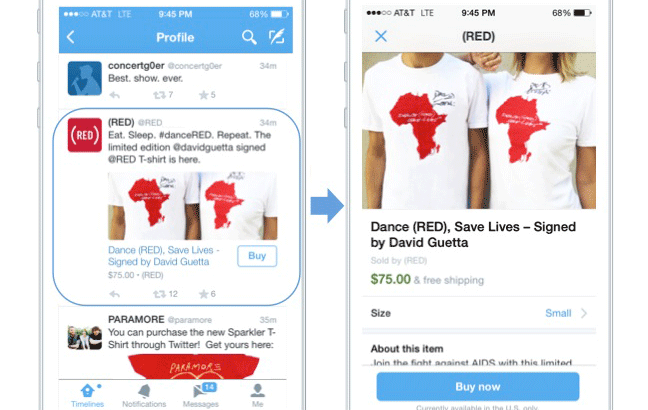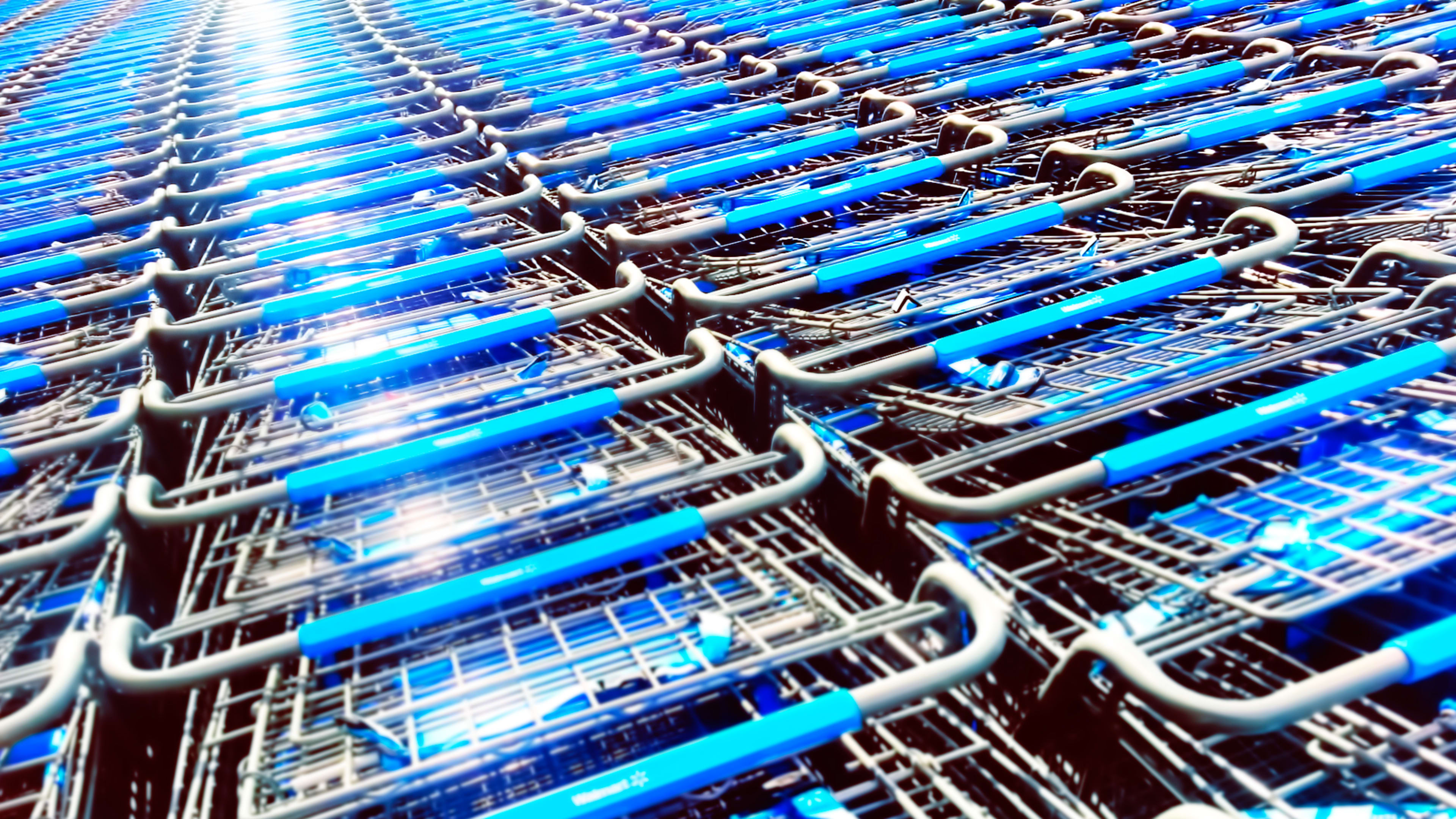Twitter shopping is here. On Monday, the company announced it is testing a “buy button” that will allow users to make purchases without leaving the social network.
Buy buttons within tweets from select Twitter accounts will initially be shown to a small percentage of U.S. users in Twitter’s mobile apps. The company plans to eventually expand the program to more users and its desktop program.
Like any other tweets, tweets with buy buttons can be promoted so that they function as ads. Twitter isn’t disclosing whether or not it will take a cut of the buy button purchases themselves.
Payments company Stripe will power these transactions, though a Twitter spokesperson said the social network expects to add more payment partners over time. After clicking on a buy button, the entire checkout process can be completed without leaving Twitter. The site will store payment information (“encrypted,” “safely stored,” and “always remove[able],” Twitter says) so that it does not need to be re-entered for every new purchase.
This ease of purchase could make Twitter’s buy button an impulse purchaser’s worst nightmare, which, of course, is every marketer’s dearest dream.
Twitter hasn’t exactly kept its commerce ambitions under wraps. In August 2013, shortly before the company went public, it hired former Ticketmaster president Nathan Hubbard to lead its commerce efforts. In January, mockups of a Twitter buy button surfaced on tech website Re/code, and by June, tweets featuring the button had been spotted in the wild. Last month, Twitter acquired payment infrastructure startup CardSpring.
Facebook is also experimenting with commerce, and it’s obvious why. We spend more of our time on social media than anywhere else on the Internet, and sites like Twitter and Facebook have built businesses on advertisers’ desire to interact with us there. Both companies have paired with data companies that could prove links between the ads we see on their sites and what we buy in their customers’ brick-and-mortar stores.

Startups that have tried to carve out a shopping-specific niche among the giant newsfeed providers, however, argue that commerce doesn’t make sense in the context of general social sites.
“If I log onto a social platform, I’m there to be social,” David Tisch, who recently launched a shopping app called Spring that looks much like Instagram, told me last month. “And I think every social platform that got built was user to user and then brands were a secondary piece. So brands have tried to figure out where they fit into these networks. As a customer, I’m never logging onto any of these networks saying, I want to go shopping.”
Twitter has previously launched commerce experiments with American Express and Starbucks, but neither was widely adopted nor as seamless as the buy button. Making the buy button official is a much more serious step toward a commerce business during a time when Twitter is aggressively pursuing more revenue sources–whether its users want to go shopping or not.
Recognize your brand’s excellence by applying to this year’s Brands That Matter Awards before the early-rate deadline, May 3.
